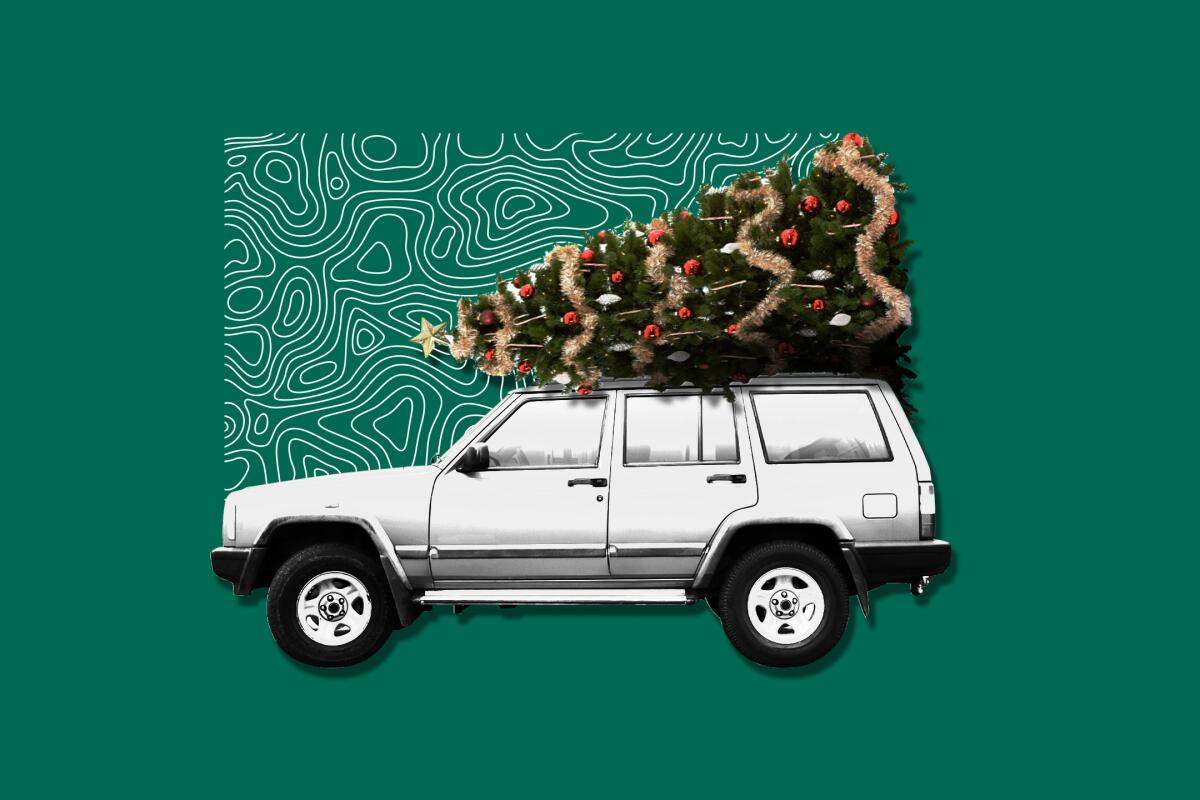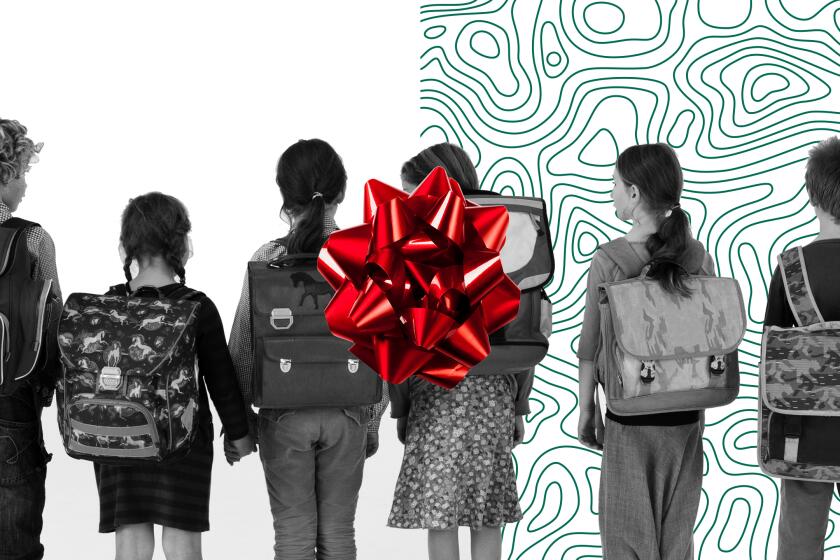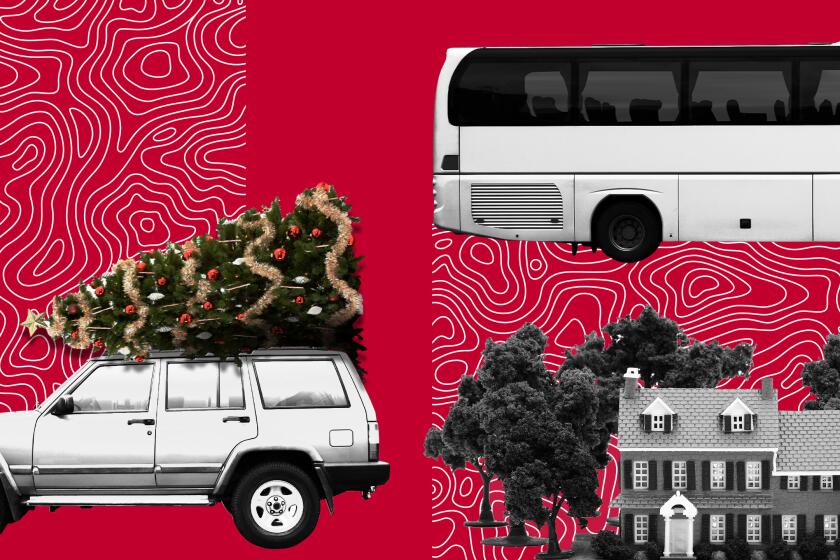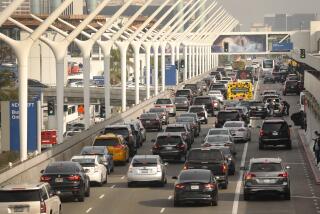What to know before hitting the road for the holidays

- Share via
This story is part of a package on holiday travel.
The holidays this year promise an extra helping of FOMO because of FOCC — Fear of Missing Out because of Fear of Catching Coronavirus.
We can’t tell you whether to stay or go to Grandma’s, although the Centers for Disease Control and Prevention thinks there’s no place like home for the holidays — and by “home” the agency means where you really live and not where you’d rather be.
The recent spikes in virus cases have dampened travelers’ enthusiasm for a holiday trek, research from Longwoods International’s Traveler Sentiment Study shows. “Traveler sentiment really does follow the news cycle,” said Amir Eylon, president and chief executive of Longwoods, whose statistics show that 53% of respondents are not planning a holiday trip, but of those who are, 38% will be by car.
Last year nearly 50 million people were expected to hop into their vehicles for the Turkey Day trek, but this year AAA thinks that number will drop to 47.8 million, according to statistics released Thursday. But that doesn’t mean there won’t be traffic: INRIX, which provides traffic analytics globally, said traffic will be bad on Wednesday afternoon. That’s no surprise, but you may encounter backups of as long at 69 minutes along Interstate 5 from Colorado Street to its intersection with Interstate 605 south.
If you take to the highways, here are some tips to make your road trip as smooth as possible:
- Before leaving, check what’s happening in California with the L.A. Times coronavirus tracker, which offers a county-by-county breakdown, or across the nation by perusing the CDC’s state and county tracker. You can always turn back.
- Because of wildfires and resulting ash this year, it’s doubly important to clean your headlights and taillights. Make sure that windshield is crystal clear inside and out.
- Wipe down your car with disinfectant. Make sure you hit high-touch areas well — door handles, steering wheel, ventilation buttons and your audio system’s volume controls. Give your keys a wipe too.
- Do your car’s regular pre-trip check — tires, especially — because this is not the time to be stranded. Check fluids and belts (or have them checked).
- Check the weather before you go; it may be 80 and sunny in the Southland, but be prepared for inclement weather if you’re headed to the mountains. (You did check the windshield wipers to make sure they hadn’t rotted, right?)
- Pack masks, gloves and hand sanitizer for all passengers. Disinfectant wipes are a must. You might not find Clorox or Lysol wipes, but you can make your own.
- Take your restroom break after you pump gas; wash your hands before and after.
- Create a rest-stop kit for each person traveling with you: small bars of soap, paper towels (for drying and avoiding high-touch handles), toilet paper, travel-size packs of toilet seat covers; include hand sanitizer and wipes for when soap and water are not available. A June article in the Physics of Fluids also raised concern about possible contamination from the “plume” that rises when you flush the toilet, so wear a mask and wash your hands vigorously.
- To reduce the number of stops and limit exposure to the virus, pack a cooler with drinks and snacks, including high-protein foods that won’t spoil.
- Keep your cellphone charged; have plenty of charging cords and perhaps external batteries for electronic devices.
- If you usually stop at a restaurant along the way, call ahead to make sure it’s open. Many businesses are closed, some permanently. If you’re staying overnight at a hotel or motel, make reservations and ask about the inn’s cleaning protocols. Wipe those high-touch areas in your room, including the TV remote.
More to Read
Sign up for The Wild
We’ll help you find the best places to hike, bike and run, as well as the perfect silent spots for meditation and yoga.
You may occasionally receive promotional content from the Los Angeles Times.










